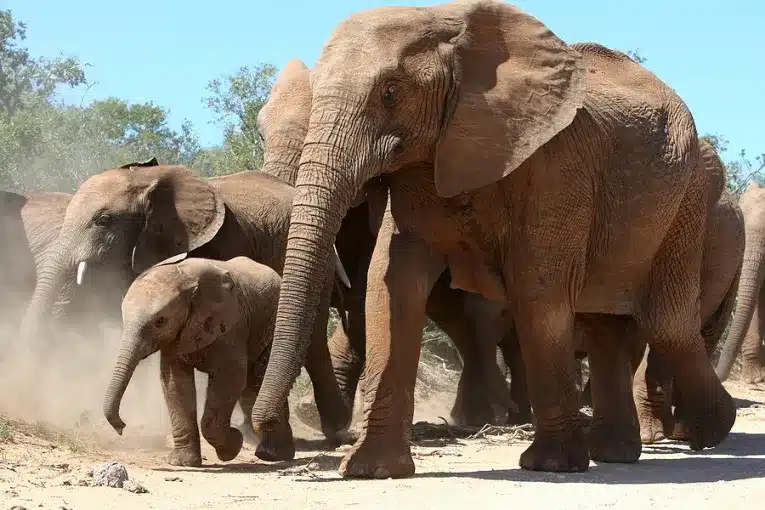About Placental Mammals:
- A placental mammal is an animal that has a placenta.
o The placenta is a vascular organ formed during gestation of female mammals (except for monotremes and marsupials), built up of maternal and fetal tissues jointly, and which serves for the transport of nutrient substances from the mother to the fetus and to eliminate fetal waste products.
- Placental mammals carry their fetus in the uterus until they are born at an advanced stage.
- The young get their nourishment through a placenta before birth. The placenta delivers nutrients and oxygen to the fetus in the uterus.
- The placenta permits a long period of fetal growth in the uterus. As a result, the fetus can become large and mature before birth.
- Classified under the subclass Eutheria, placental mammals have 4,000 identified species.
- Fossil evidence shows that the first placental mammals evolved between about 163 million and 157 million years ago during the Jurassic Period (201.3 million to about 145 million years ago).
- The placentals include all living mammals except marsupials and monotremes (egg-laying mammals).
- Marsupials and monotremes have a less-developed, less-efficient type of placenta that limits the gestation period.
What are Marsupials?
- Marsupials are a group of mammals that are known for giving birth to relatively undeveloped young, which then continue to grow and develop outside the womb, typically in a pouch.
- Marsupials have a short-lived placenta that nourishes their young for just a few days before they’re born, the rest of their nutrition coming from the mother’s teats inside the pouch.
- Marsupials have an extra pubic bone, the epipubic bone, to support their pouch.
- There are over 330 species of marsupials. Around two-thirds of them live in Australia. The other third live mostly in South America.
- Examples: Kangaroos, Koalas, Opossums, etc.
Q1: What is brown fat?
Brown fat, also called brown adipose tissue, helps maintain your body temperature when you get too cold. It’s the same fat that bears use to stay warm when they hibernate. Babies are born with a lot of brown fat behind their shoulder blades. Newborns can’t shiver, which is one of the ways the body creates heat. Brown fat acts as a built-in heater.
Source: Marsupials key to discovering the origin of heater organs in mammals
Last updated on December, 2025
→ Check out the latest UPSC Syllabus 2026 here.
→ Join Vajiram & Ravi’s Interview Guidance Programme for expert help to crack your final UPSC stage.
→ UPSC Mains Result 2025 is now out.
→ UPSC Notification 2026 is scheduled to be released on January 14, 2026.
→ UPSC Calendar 2026 is released on 15th May, 2025.
→ The UPSC Vacancy 2025 were released 1129, out of which 979 were for UPSC CSE and remaining 150 are for UPSC IFoS.
→ UPSC Prelims 2026 will be conducted on 24th May, 2026 & UPSC Mains 2026 will be conducted on 21st August 2026.
→ The UPSC Selection Process is of 3 stages-Prelims, Mains and Interview.
→ UPSC Result 2024 is released with latest UPSC Marksheet 2024. Check Now!
→ UPSC Prelims Result 2025 is out now for the CSE held on 25 May 2025.
→ UPSC Toppers List 2024 is released now. Shakti Dubey is UPSC AIR 1 2024 Topper.
→ UPSC Prelims Question Paper 2025 and Unofficial Prelims Answer Key 2025 are available now.
→ UPSC Mains Question Paper 2025 is out for Essay, GS 1, 2, 3 & GS 4.
→ UPSC Mains Indian Language Question Paper 2025 is now out.
→ UPSC Mains Optional Question Paper 2025 is now out.
→ Also check Best IAS Coaching in Delhi

















